Estimated reading time: 7 minutes
A strange piece of produce has been showing up in grocery stores across the country recently–something that looks a little like the man-eating Audrey in Little Shop of Horrors.
Confusing in almost every way, the green, pear-shaped chayote “squash” is actually a fruit, is incredibly delicious, and is easy to grow at home. Read on to learn all about chayote, including how to eat it, grow it, and pronounce it.
Want to save this post for later? Click Here to Pin It On Pinterest!
Say Its Name
Chayote is native to Central America and was originally named “chayotl” in indigenous Nahuatl, which accounts for the unusual pronunciation.
It is pronounced [chī-yo-tay] but goes by different names in different places. You may see it referred to as a cho-cho, choko, a pear squash, or a vegetable pear, but no matter what the name, it is the same delicious, unmistakeable fruit.
Today, you’ll find chayote all around the world, incorporated into Indian, Cajun, French, Jamaican, and well, really almost all tropical cuisines.
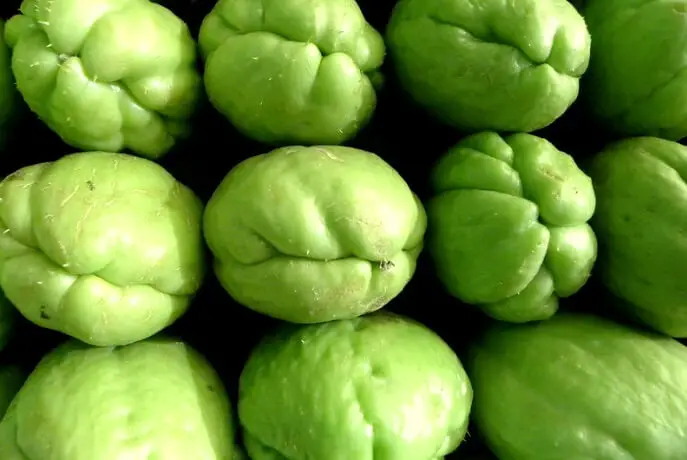 History and Uses
History and Uses
Chayote (sechium edule) is a member of the gourd family, but the large, single seed at its core makes it an outlier. While squash and gourds are annual, chayote is considered a warm-season, tender perennial. In a mild climate, it can come back from the same plant year after year.
There are two varieties of chayote, smooth-skinned and a prickly variety, but the only difference between them is their outward appearance.
Chayote leaves can be steeped to make a tea that is purported to dissolve kidney stones and is used as a treatment for arteriosclerosis and hypertension. More often, the fruit is eaten – boiled, baked, fried, pickled, or occasionally even raw in salads.
Want to start a homestead but not sure how?
Click Here to get a FREE book, "How To Homestead No Matter Where You Live."
The tender leaves and tendrils can be sauteed and eaten, and even the tuber part of the roots is eaten. The fruits are best harvested when they are still tender before they get hard. They are still edible once they toughen up, but the skin is not.
The flavor of the chayote squash is a little nutty and mildly sweet, and the flesh is very firm and smooth, like an unripe melon.
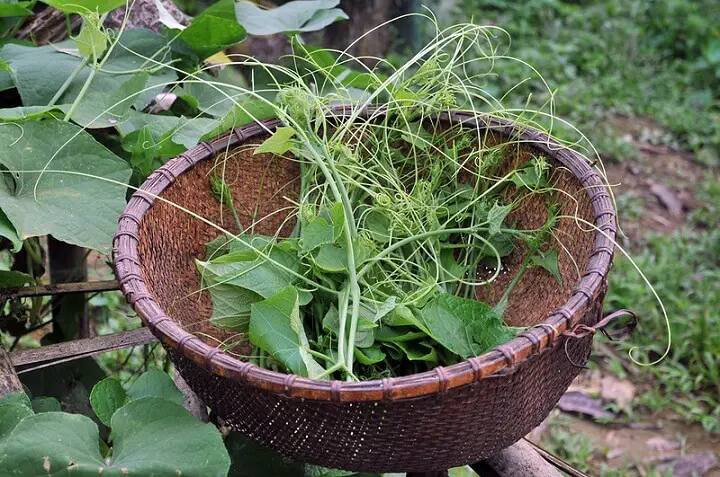 Health Benefits
Health Benefits
Chayote is rich in nutrients and low in calories. With zero fat and only 39 calories, a single chayote contains a quarter of the vitamin C you need each day. One squash is also packed with almost half the recommended daily folate requirement – making it a great food to eat during pregnancy.
But there are other benefits to eating chayote, starting with high levels of myricetin, an antioxidant shown to reduce cholesterol levels in studies on animals. At the very least, this low-calorie, high-fiber food is a great addition to a healthy, balanced diet.
Grow Your Own
Chayote grows best in a warm, tropical or subtropical climate. However, if your climate doesn’t support 120 to 150 frost-free days per year, you can still cultivate a chayote plant in a container and move it outdoors when the weather warms up.
There is no way to grow chayote from seed, but that hardly matters. If you can get your hands on one chayote fruit, you’re golden. If you’re buying a chayote to plant, look for an older, tougher specimen. Take it home and put it on a windowsill or kitchen countertop and forget about it. Seriously, just set it and forget it.
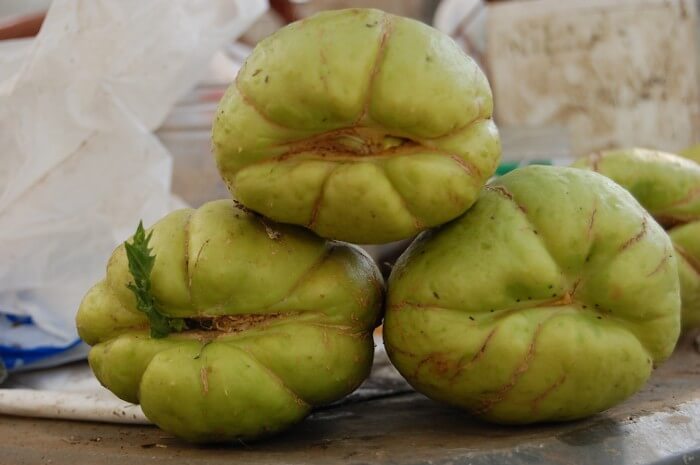
After a few weeks to a month, your fruit will begin to look a bit shriveled and a sprout will emerge from the narrow end. Let the sprout grow until it is six inches long or so, and then plant the fruit, shoot up, fat end down in some well-drained soil.
While chayote is insect and disease resistant, the one thing the plant cannot tolerate is wet roots. If possible, plant your chayote into a mound surrounded by a weed-free, mulched area at least five feet in diameter.
Planting along a fence or some sort of trellis is ideal – chayote vines are vigorous and fast-growing and will cover a surprisingly large area quickly. Water your chayote at regular intervals so that the soil never dries out completely.
You can top dress with a little compost every six weeks to increase production, but it isn’t necessary. Whatever you do, don’t go overboard. One healthy plant will produce up to 50 fruits each year – enough fruit to keep a family of four in chayote squash for an entire season.
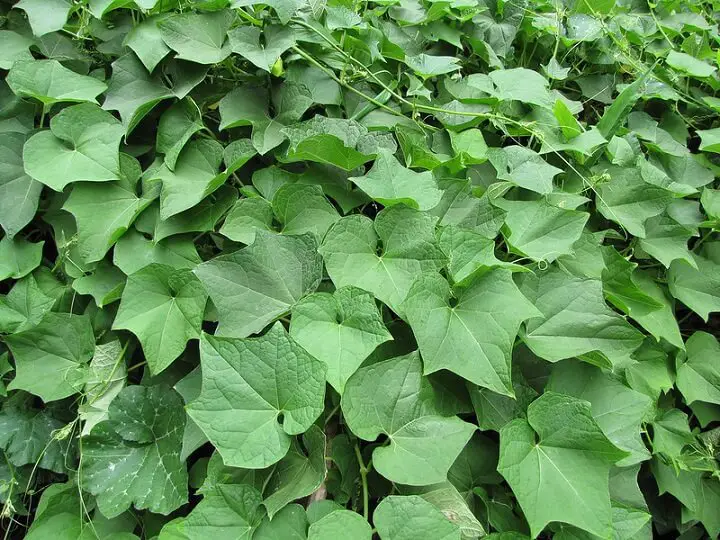
Unlike other squash, chayote produce fruits up until mid to late fall. If you live in an area that freezes, once you’re done harvesting in the fall, cut the fine down to a few inches from the ground and heap mulch at least 12 inches thick over the stem before the first freeze.
Want to start a homestead but not sure how?
Click Here to get a FREE book, "How To Homestead No Matter Where You Live."
Harvesting, Storing, and Eating Chayote
Keep an eye on your plant as the fruit begin to grow, and once they have reached 4-6 inches in diameter, cut the fruit off the vine with a pair of pruning shears. Chayote can keep in the fridge or root cellar for up to a month and can be frozen or canned to last far longer than that.
Here are some ways to eat it…
- To get a feel for the essential flavor of chayote, you can boil it until tender, slice it, and serve it as a side with a little salt and pepper and maybe a pat of butter.
- For a bit more pizzazz, peel, slice, and saute the fruit in some butter alongside some shallots and garlic and garnish with some parmesan.
- Baked and stuffed chayote is a fantastic twist on traditional stuffed squash.
- Chayote makes a killer one-pot Filipino dish with chicken and meatballs.
- For those wanting a tangy variation, pickled chayote is just what the doctor ordered.

The bottom line on chayote is that it is an incredibly versatile and prolific addition to your food garden. Most people who plant chayote are amazed at how vigorously they grow.
They are a great alternative to flowering vines if you have a pergola structure you want to be shaded in the summer, and they aren’t susceptible to squash borers, which makes them a sure bet each year.
For a can-do squash that offers something a little different, chayote is a homesteader’s go-to.
Like this post? Don't Forget to Pin It On Pinterest!
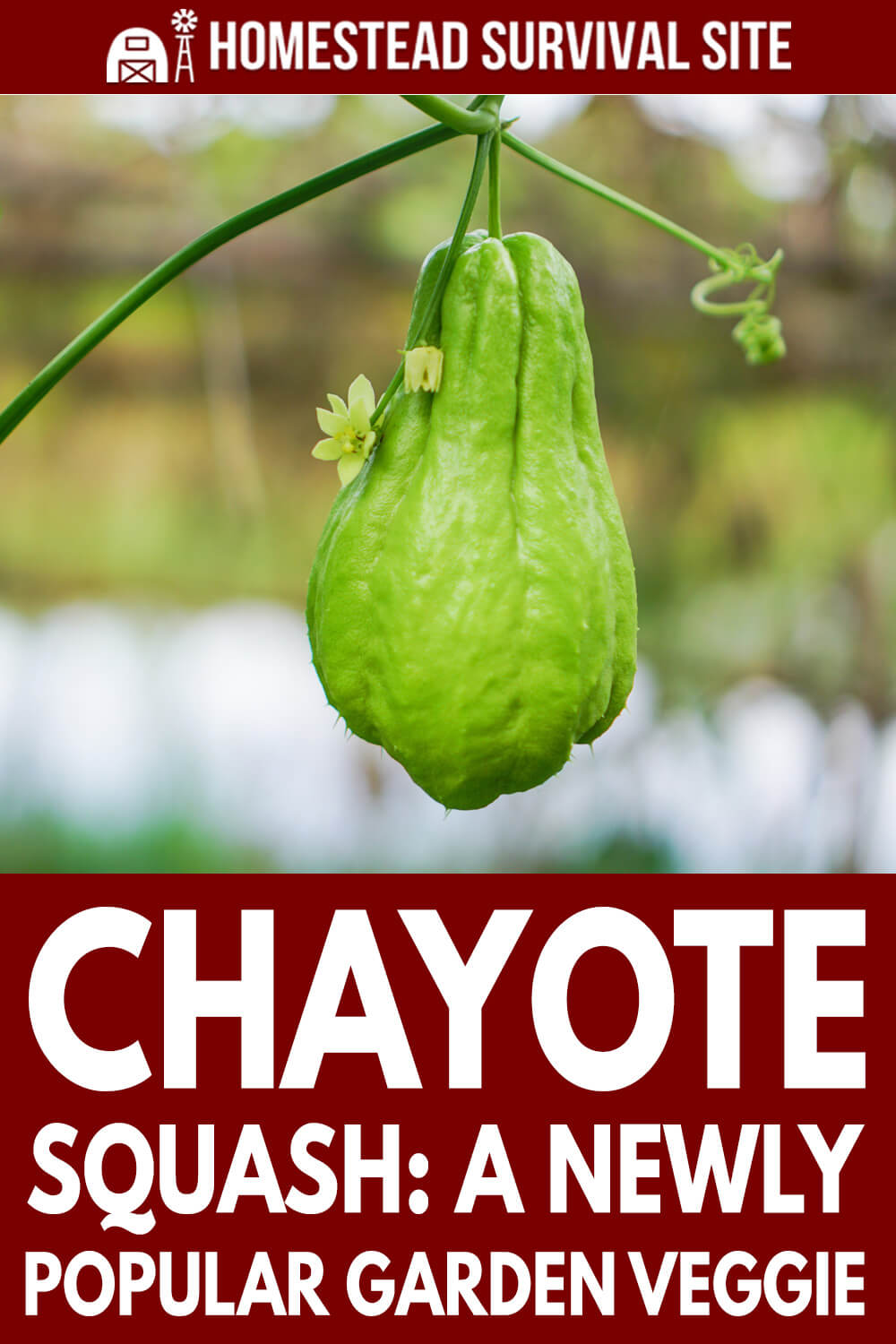


I live in the twin islands Trinidad and Tobago in the West Indies and we call the Chayoye Chrystophene and it’s just delicious. I personally eat it raw at times. It’s nice to know the correct name thank you so much.
I first ate chayotes 55 years ago in Costa Rica . I was a teenager and was happy to see them in the stores years later. I had one sitting on the counter in my kitchen that sprouted so I plan to try growing one this year !! I live in Southern Oregon and hope I will have enough time to get some fruits off of my plant. Thanks for your information